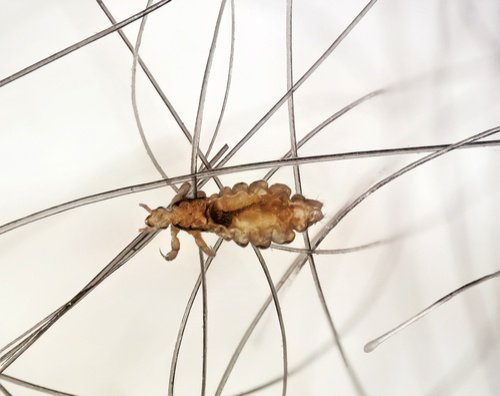- By CycreekPestAdmin
- In General
- Tags General
No one wants to see their child scratching vigorously at their head, or get the dreaded phone call from the school that there has been another lice outbreak. But lice infestations are a reality of modern life, and the fact that people are so transient and mobile gives lice an even greater opportunity to spread.
A few important facts about lice to keep you informed:
Lice Are Parasites
Wingless, creatures that reside on the human scalp, lice are more of a nuisance and an irritant than they are an actual danger. They don’t carry infectious diseases, which is great news, but they can cause endless itching. These little pests are approximately 1/8” in length and draw blood by piercing the skin, which can cause sores and bite marks. They particularly like to hang out around the nape of the neck and behind the ears, but are happy anywhere in the hair.
Lice Infest Human Hair
Finding a place that is warm and safe, lice like to infest the head. And the more hair you have, the more likely they are to be able to hide. On average, lice are prolific breeders, laying three to four eggs per day, per adult female. These eggs (called nits) attach to hair strands and stick on while they grow into nymphs. Nits must stay close to the base of the head in order to maintain the needed warm temperatures to grow. They hatch between 6 and 9 days following mating, appearing transparent at first, then white. Each head louse has a lifespan of approximately 28-30 days.
Schools Are Breeding Grounds for Lice
Not a communicable disease, but is certainly easily transferred from one person to another. Since they are wingless, lice cannot fly or even jump from one person to another. They do crawl very quickly, however, and often find their transportation through direct head-to-head contact (hugging) or sharing of clothing, hats, hair accessories, combs and brushes, or other ways that lice can be transported from one person to another.
Outside of school, lice can be spread through sharing of pillows or sleeping bags, towels, bedding, or any other personal head-to-head contact. Children are much more likely than adults to be victims of lice and to spread it. This is probably because they are much more likely to forget a comb, try on a friend’s hat, share a bicycle helmet, or borrow a pillow at a sleepover.
Read more: Back to School: Keeping Schools and Daycares Pest Free
Lice Need a Host to Survive
If they don’t have the temperature and safety of a host for between 24 and 48 hours, lice and their eggs cannot survive. Some experts believe that some lice can only last up to a few hours on their own, but that is still long enough for lice to transfer from one victim to the next. One way to combat a lice infestation is to set aside affected clothing, bedding, pillows, and other fabric items in a closet or plastic bin for 48 hours in order to insure that pests can’t stay alive away from humans.
Lice Prevention
Most people don’t think about preventing lice until they’ve had an experience with it. Once a family has gone through the hassle of chemical treatments and comb-outs, they tend to become much more attentive to keeping these little pests away from their home. While cleanliness is a great way to prevent many types of insect infestations, lice are equal-opportunity pests—they really don’t care whether a person is clean or not.
Some basic practices can help to prevent head lice. Refrain from sharing objects such as hair brushes, hats, pillows, headbands or other personal belongings. Also, avoiding putting heads physically together so that hair touches can help a lot. In addition, it’s wise to do lice checks on children as often as once a week, as well as anytime you see head-scratching. Soaking combs and brushes in a bleach solution may also be an effective prevention method.
Lice control for an infestation requires the use of specialized shampoo (to kill the adult lice) as well as a special comb for removing the stubborn, sticky nits. If you have a severe head lice infestation or find that your child has trouble with the treatments, you may need to contact your physician for help. In the case of lice, a pest extermination service is not your best protocol for fixing the problem. Taking a more individual approach is most effective.



